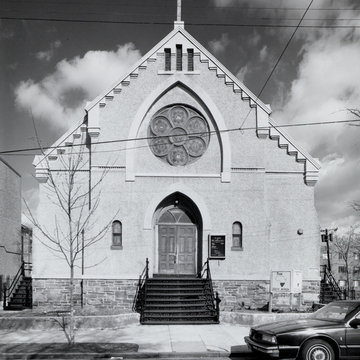E. Francis Baldwin of the Baltimore firm of Baldwin and Pennington designed Saint Teresa's for a mixed German, Irish, and African American Catholic parish; it was built by Isaac Beer. A brick hall church, Saint Teresa's facade is framed by a corbeled cornice set in a false stepped gable pattern and a high, uncoursed fieldstone basement. Gothic Revival in style, it has buttresses to support the side walls with round-arch windows on the flanks, but its round-arch entry is set within a pointed-arch frame, as is the large rose window above it. Later stucco obscures some of the original
You are here
Saint Teresa of Avila Church
1879, Baldwin and Pennington. 13th and V streets SE
If SAH Archipedia has been useful to you, please consider supporting it.
SAH Archipedia tells the story of the United States through its buildings, landscapes, and cities. This freely available resource empowers the public with authoritative knowledge that deepens their understanding and appreciation of the built environment. But the Society of Architectural Historians, which created SAH Archipedia with University of Virginia Press, needs your support to maintain the high-caliber research, writing, photography, cartography, editing, design, and programming that make SAH Archipedia a trusted online resource available to all who value the history of place, heritage tourism, and learning.

